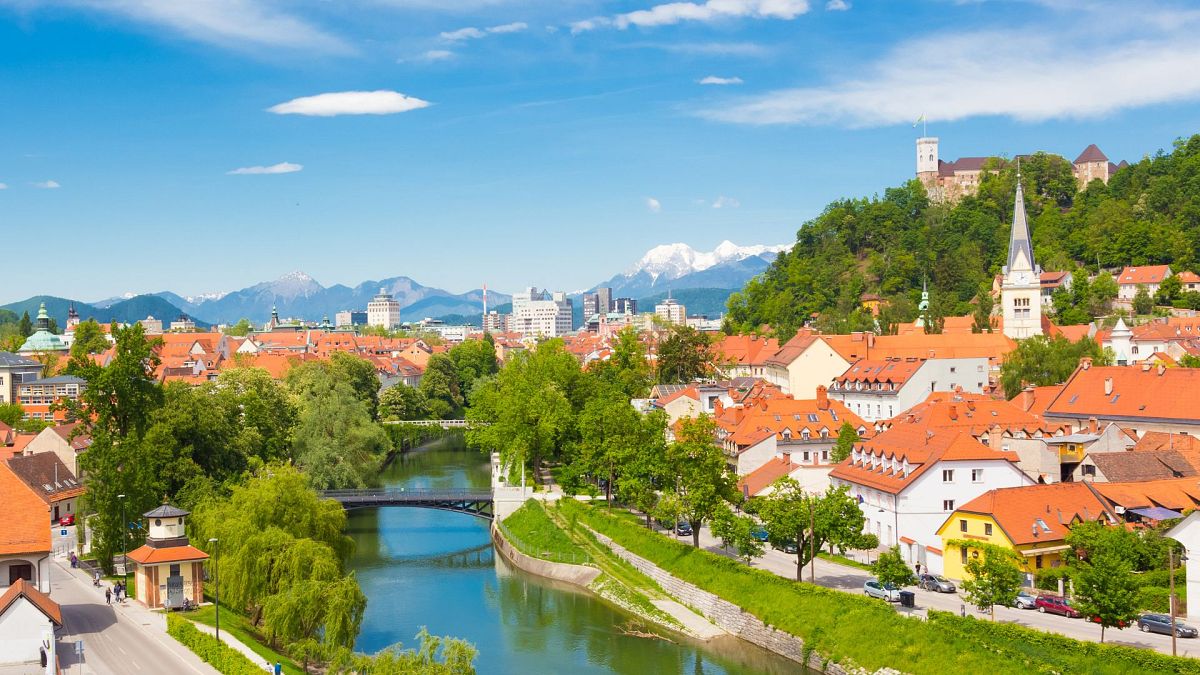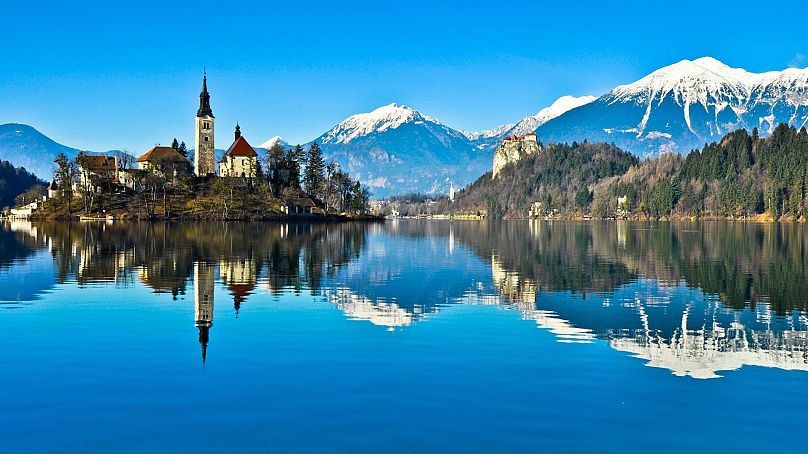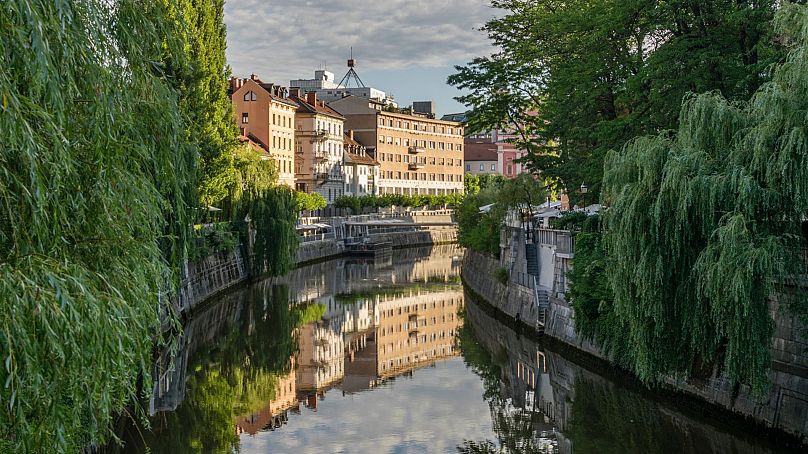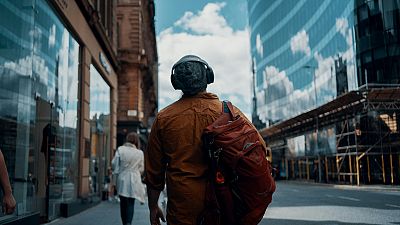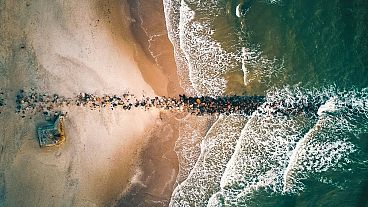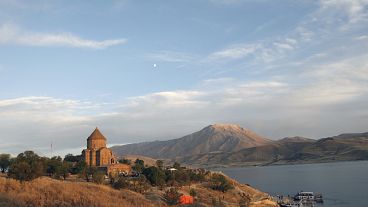Head here for artists’ communes, majestic landscapes and homemade schnapps.
“Isn't that near Russia?”, “Why would you do that?”, and the occasional and incredulous, “What?!”
These are just a few of the dumbfounded questions I hear when I tell people that I’m moving to Slovenia.
After stints as a digital nomad in Shanghai, Bangkok and Mexico City, Ljubljana - the capital of Slovenia - is next on my list.
It might not be the most obvious choice for remote workers. Yet, since discovering Slovenia when I first Interrailed around Europe in my late teens, I’ve cherished the low-key Balkan nation as my favourite secret retreat.
Ljubljana offers everything a traveller would want from an ancient European city. A fascinating history stretching back into the mists of antiquity. A rich tradition of art and music. And enticing local cuisine with a sense of self robust enough to stand on its own and the confidence to welcome the best dishes from its neighbours.
Also, it’s really not that close to Russia - the two countries’ closest borders are around 1,700 km apart.
But I am getting ahead of myself; let's break down why Ljubljana is the ideal city for digital nomads.
Slovenia is a paradise for outdoor adventures
Slovenia is mostly landlocked, so there are limited opportunities for hitting the beach and working on your tan. But don’t let that put you off.
With craggy features like the Alps, Dinaric and Karawank mountains, the rural beauty of the Pannonian plains, and the majesty of Lake Bled, there is plenty to see and do.
Some of my first memories of Slovenia hail back to my time as a teenage vagabond hiking through Triglav National Park, home to the Julian Alps and Lake Bled.
I would jump on one of the regular daily shuttle services, and within the hour, I would be transported from my urban digs into the heart of Slovenia's only national park.
I spent hours walking through the undergrowth in the hope of spotting creatures like the golden eagle, griffon vulture or even a brown bear.
I should be glad I never saw the notoriously twitchy and unpredictable grizzly. Undoubtedly, I would have unwittingly provoked one into a mauling frenzy.
Ljubljana is a blend of ancient and modern
But I am not going to live in the woods. I'm a digital nomad hunting down remote work and flexible writing gigs for a living. I don't want to stalk deer or unleash arrows at unsuspecting Alpine marmots to survive.
All I need is a decent wifi connection, good coffee and access to the convenience and excitement of a modern European city to get by - enter Ljubljana.
Ljubljana was first mentioned in historical records in the 12th century, but humans have lived there since 2,000 BCE. And if you look carefully, you can see the different influences on the city through its architecture, including Roman and Medieval structures, alongside the more prevalent Baroque style.
The mix of architecture embodies the soul of the city - a curious mix of ancient and modern, rural and urban.
Because of its position as a nexus of historical trade routes across Europe, Ljubljana has absorbed cultural influences from all across the continent. And with the locals well versed in English, German, French, Spanish and Italian, communicating is easy.
Slovenia keeps tradition alive
The Slovenian way of life embraces tradition and modernity in a disarming and charming manner. For instance, many locals still keep poultry, make cider and spirits, and butcher their own meat.
Make no mistake, these are not self-aggrandising hipsters searching for a lucrative side hustle selling artisanal treats to the masses. They are just normal people doing what they have always done.
Last summer, visiting my software developer friend, I was welcomed into his very modern home with a beautiful glass of pear schnapps made in his garden shed alongside some rather spicy home-cured sausage. And we spent a boozy afternoon eviscerating chickens in preparation for a family barbecue the next day.
This kind of random experience, where I stuffed my face and drank irresponsibly while somehow learning some handy animal husbandry skills, is a big part of why we are moving.
Ljubljana bursts with creativity
Artists and culture vultures are spoiled by the level of visual stimulation in Ljubljana.
From the gorgeous cobblestone streets underfoot to the iconic battlements of Ljubljana Castle, mooching around here on a sunny afternoon is a feast for the eyes.
But that is just the beginning. The city has an abundance of galleries and museums, including the National Gallery, home to the most complete collection of Slovene art in the country and the City Museum of Ljubljana, home to the world's oldest wheel.
On top of that, Ljubljana has a vibrant and active art scene, boasting striking murals and graffiti in and around the Metelkova Art Center. What started as a humble artists’ squat has grown into an autonomous cultural and social centre supported by the European Cultural Fund.
Slovenia offers a high standard of living
The standard of living in Slovenia for the average person is very good. While salaries might not compare to those in other major European nations and taxes are relatively high, rent, food and other expenses are comparatively low.
And once you get into the spirit of distilling your own alcohol and maintaining a few chickens, you can stretch your income even further.
Although Slovenia does not currently have a digital nomad visa scheme, it is part of the European Union. This meansEEA and EU citizens can work remotely in the country for three months without restrictions, after which you simply need to register your stay.
How to get to Slovenia
Slovenia is well connected to the rest of Europe by train. It has links with Austria, Croatia, Germany, Hungary and Italy via EuroCity and InterCity, as well as night train connections with Germany and Switzerland via EuroNight.
From the UK, you can reach Slovenia with two changes on trains operated by Eurostar, Thalys or TGV. Depending on your choice, the journey takes between 16 and 24 hours, with prices starting at around £105 (€123). You can also catch a bus from London if you are feeling thrifty, with fares as low as £75 (€88).
Long-haul bus journeys are no longer the hell-on-Earth experiences they once were. In fact, they are comfortable, with much more legroom than aeroplanes and often include free wifi as standard.
Ljubljana also has an international airport, with direct flights from London taking just over two hours and costing from around £100 (€117).
